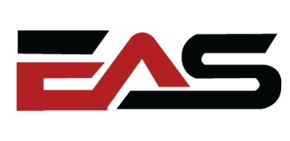What is P and ID Diagram?
- June 17, 2021
- Venkatesh Selvaraj
- 0

Abbreviated as P&ID, a piping and instrumentation diagram is an articulate drawing of a processing plan that entails the piping and process equipment with its instrumentation and control machinery. It displays the piping and associated parts of a physical process flow.
Such diagrams are famous in the engineering field.
The piping and instrumentation diagram has a close relation to the process flow diagram (PFD) that explains a rather typical flow
of plant processes concerning major equipment of a plant facility
EAS is a group of highly experienced professionals working in oil and gas industry whose goal is to be the best provider of Control and Automation based services from conception to Engineering, Design and detailing, installing, commissioning and hand over to customer.
We achieve this goal by specializing exclusively in the project management of EAS plans. Specialization means providing quality services to industries, professionals who are working in Industrial automation, students. In our pursuit of absolute quality, we will maintain a quantitative means of measuring our progress towards this objective.
Industrial Automation is the use of Control Systems, such as computers or robots, and information technologies for handling different processes and machineries in an industry to replace a human being. It is the second step beyond mechanization in the scope of industrialization
Why do we use P&ID?
To maintain and modify a process effectively, you need a P&ID graphical representation. It provides the foundation for the development of system control blueprints, such as Hazard and Operability Study (HAZOS), during the design stage.
Basic Symbols of P&ID
Like all other professional diagrams, P&IDs has standard shapes and symbols. Based on the industry and manufacturer, there is a wide variety of symbols. Let us look at some of the most famous symbols suitable for smooth functioning across the industry.
A. Equipment Symbols
Equipment in P&ID entails different units that don’t fit into other groups. These include hardware such as compressors, conveyors, motors, turbines, vacuums, and related mechanical tools
B.Piping Symbols
A pipe is a tubular vessel for transporting liquid or gaseous substances made from plastic or metal. In this section, there are one-to-many pipes, multi-line pipes, separators, etc
C. Vessel Symbols
A vessel is a storage container for fluids. Vessels are known to change the characteristics of the fluid contained in them. These are tankers, columns, cylinders, bags, etc.
D. Heat Exchanger Symbols
A tool modelled to sufficiently transfer heat from different regions or mediums is known as a heat exchanger. Such devices are boilers, condensers, etc
E.Pump Symbols
To move fluids in and out of other objects, you need a pump. It uses suction or pressure to raise, compress, or
move the fluid. This section consists of pumps and fans
F. Instrument Symbols
An instrument is a tool for measuring or controlling quantities like temperature, flow, angle, pressure, etc. In a
P&ID, they include indicators, transmitters, recorders, controllers as well as elements
G. Valve Symbols
Like the valves in our hearts, they are designed to regulate, direct, or control the flow of a fluid through closing,
opening, or slightly blocking passageways in piping set up. In this category, there are rotameters, orifices, and other kinds of valves
H. P&ID Flow System Illustration
In the diagram below, a fluid flow system, demonstrated is the mechanical and model entities put in one place. It shows the relationship between the processes. The start is the Feed process and the arrows represent the subsequent step/stage of the chemical process. The end is the arrow marked 38gpm to Process. It is a simple diagram, as shown below
I. P&ID Separator Vessel Illustration
Below is a drawing of separator vessels in three phases. The components are commonly used to separate various fluids
that flow from oil wells in the oil and gas industry. From the diagram, you can see the 3-phase inlet that branches to vapor outlet, water outlet, and oil outlet. In between are the separation processes to get the water, vapor, and oil extracted
plc training in chennai plc scada training in chennai plc scada dcs training in chennai DCS Training in chennai Industrial Automation training in chennai Industrial Automation training institute in chennai plc training institute in chennai Good PLC Training institute in chennai plc training with placements in chennai plc scada training placements in chennai DeltaV DCS Training Honeywell DCS Training ABB 800xA DCS Training Automation training in chennai PLC Scada Training Institutes in Chennai PLC Training in Chennai PLC Training Center in Chennai Best PLC Training Institute in Chennai

